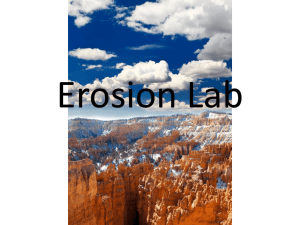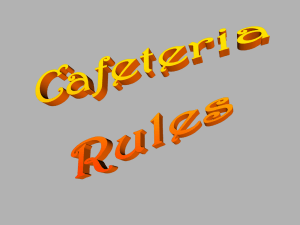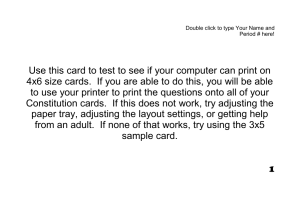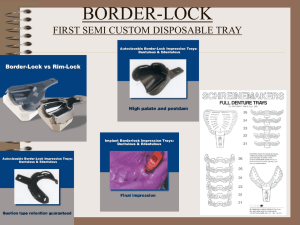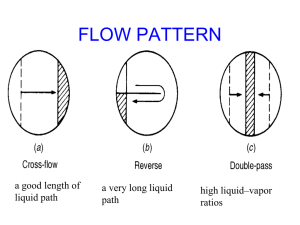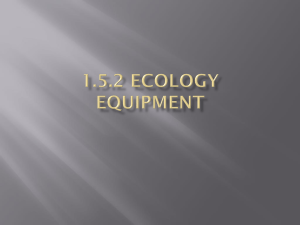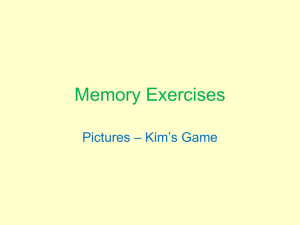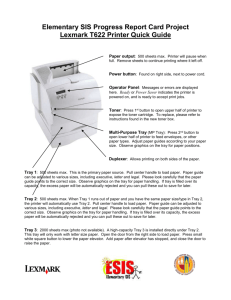doc - cormp
advertisement
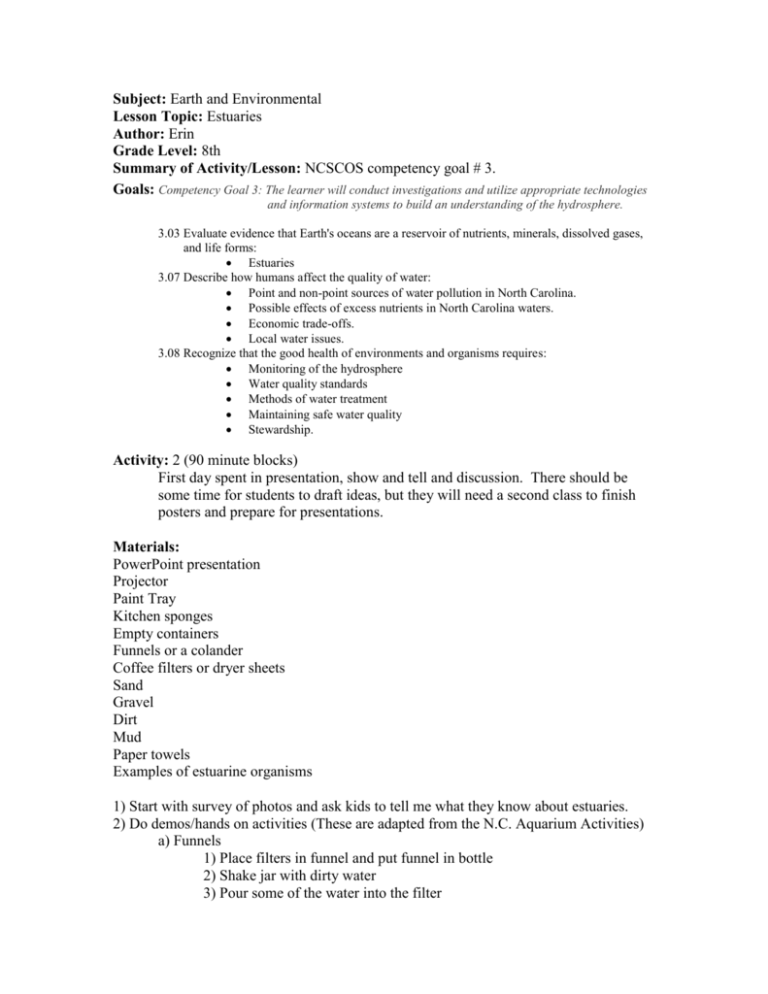
Subject: Earth and Environmental Lesson Topic: Estuaries Author: Erin Grade Level: 8th Summary of Activity/Lesson: NCSCOS competency goal # 3. Goals: Competency Goal 3: The learner will conduct investigations and utilize appropriate technologies and information systems to build an understanding of the hydrosphere. 3.03 Evaluate evidence that Earth's oceans are a reservoir of nutrients, minerals, dissolved gases, and life forms: Estuaries 3.07 Describe how humans affect the quality of water: Point and non-point sources of water pollution in North Carolina. Possible effects of excess nutrients in North Carolina waters. Economic trade-offs. Local water issues. 3.08 Recognize that the good health of environments and organisms requires: Monitoring of the hydrosphere Water quality standards Methods of water treatment Maintaining safe water quality Stewardship. Activity: 2 (90 minute blocks) First day spent in presentation, show and tell and discussion. There should be some time for students to draft ideas, but they will need a second class to finish posters and prepare for presentations. Materials: PowerPoint presentation Projector Paint Tray Kitchen sponges Empty containers Funnels or a colander Coffee filters or dryer sheets Sand Gravel Dirt Mud Paper towels Examples of estuarine organisms 1) Start with survey of photos and ask kids to tell me what they know about estuaries. 2) Do demos/hands on activities (These are adapted from the N.C. Aquarium Activities) a) Funnels 1) Place filters in funnel and put funnel in bottle 2) Shake jar with dirty water 3) Pour some of the water into the filter 4) Examine the water that drips through 5) Discuss the principle that is demonstrated (compare water samples) b) Marshes and Forests 1) Pour dirty water into the empty paint tray 2) Observe and discuss the water and what it looks like at the bottom compared with the water from the container. 3) Clean the tray out and put the sponges, gravel, and other filtering materials into the tray 4) Pour more dirty water into the tray and look at the water at the bottom 3) Talk about importance of wetlands Have both pictures and examples of these organisms 4) Students split into groups to make their own plans for conservation and preservation. Have them make a poster that will serve to advertise their plan. You can have students make up their own ideas and solutions. Or if you think students may have a hard time thinking of their own ideas, then provide scenarios and have students identify the problem and develop solutions. This way each presentation will be slightly different and less repetitive. Usually students will have time to at least a draft of their ideas. If you must create a lesson that is done in one day, then you may want to provide students with scenarios (either current events or hypothetical ones). Providing students with these scenarios may also help with variety in presentations. On the other hand, if students all identify the same problem, there may be future application for a class project to put energy towards that effort. For example, the classes I tested this lesson on all expressed concern for the amount of trash on their school grounds. After concluding this particular lesson, the students may be interested in creating a tangible solution to this problem in their own environment. Disclaimer: These lesson plans were compiled, edited, written, and/or prepared by Erin Spruill, UNCW Coastal Ocean Research and Monitoring Program (CORMP). CORMP is a NOAA grant funded program, located at the UNCW Center for Marine Science, Wilmington, NC. Feel free to update or adapt the existing lesson plans to fit your needs. We ask that you credit the authors and editors of these activities. In addition, please contact us with new methods and activities you implement in the classroom. Continual collaboration and revision will allow us to provide educators with the most useful and current resources for classroom use. Thank you.

